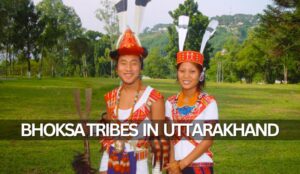Uttarakhand, formerly part of Uttar Pradesh, has a rich history of national movements and struggles that have shaped its identity and paved the way for its recognition as a separate state. These movements were driven by aspirations for regional autonomy, preservation of natural resources, and socio-economic development. Here’s a look at some of the key national movements of Uttarakhand:
1. Chamoli Satyagraha (1960)
The Chamoli Satyagraha was a significant national movement against the Tehri Dam project in the Chamoli district. Led by local leaders and activists, it protested the displacement of villagers and environmental concerns arising from the dam’s construction.
2. Uttarakhand Andolan (1994)
The Uttarakhand Andolan, also known as the Uttarakhand Movement, was a widespread agitation for statehood and autonomy. It gained momentum in the early 1990s, with demands for separate statehood to ensure better governance, development, and preservation of local culture and resources.
3. Chipko Movement (1970s)
Originating in the Garhwal region, the Chipko Movement was a non-violent protest against deforestation and commercial logging. Led by environmentalist Sunderlal Bahuguna and local women, the movement advocated for the conservation of forests through tree-hugging (chipko) to prevent their felling.
4. Anti-Tehri Dam Movement (1980s-90s)
The Anti-Tehri Dam Movement was a sustained campaign against the construction of the Tehri Dam on the Bhagirathi River. It highlighted concerns over environmental degradation, seismic risks, and displacement of local communities. The movement garnered national and international support, influencing discussions on dam construction policies.
5. Uttarakhand Movement for Reservation (2019-2020)
In recent years, Uttarakhand witnessed protests and movements demanding reservation in government jobs and educational institutions for various communities, including the Scheduled Castes, Scheduled Tribes, and Other Backward Classes (OBCs). These movements underscored issues of social justice and equitable opportunities.
6. Forest Rights Movements
Various movements in Uttarakhand have advocated for the recognition and implementation of forest rights, particularly for indigenous communities and forest dwellers. These national movements aim to protect traditional livelihoods, promote sustainable forest management, and ensure the rights of marginalized groups.
7. Women’s Rights and Empowerment Movements
Several grassroots movements in Uttarakhand have focused on women’s rights, empowerment, and gender equality. These national movements have addressed issues such as domestic violence, gender discrimination, access to education and healthcare, and political representation.
8. Cultural Preservation Movements
Movements promoting the preservation of local languages, traditions, and cultural heritage are integral to Uttarakhand’s identity. Efforts have been made to revive traditional arts, promote folk music and dance, and safeguard cultural practices from the influence of globalization.
9. Anti-Liquor Movements
Various anti-liquor movements have been organized in Uttarakhand, particularly in rural areas, to address issues related to alcohol abuse, social disruption, and its impact on family welfare. These movements advocate for stricter regulations on alcohol sales and consumption.
10. Educational Reforms Movements
Movements advocating for educational reforms have been prominent in Uttarakhand, focusing on improving access to quality education, infrastructure development in schools, and equitable distribution of educational resources across the state.
Conclusion
The national movements and struggles of Uttarakhand reflect its vibrant socio-cultural fabric and the resilience of its people in asserting their rights and aspirations. These national movements have not only shaped the political landscape of the region but have also contributed to broader discussions on environmental conservation, social justice, and sustainable development. Uttarakhand continues to draw inspiration from its rich legacy of movements as it navigates contemporary challenges and strives for inclusive growth and prosperity.
FAQs about the national movements and struggles of Uttarakhand
1. What was the significance of the Chamoli Satyagraha?
The Chamoli Satyagraha, held in 1960, protested against the construction of the Tehri Dam and highlighted concerns over displacement and environmental impact in the Chamoli district of Uttarakhand.
2. What were the main objectives of the Uttarakhand Andolan?
The Uttarakhand Andolan, which began in the early 1990s, aimed to secure separate statehood for Uttarakhand. It advocated for better governance, preservation of local culture, and equitable development in the region.
3. What role did the Chipko Movement play in Uttarakhand?
The Chipko Movement, originating in the 1970s, was a non-violent protest against deforestation and commercial logging. Led by environmentalist Sunderlal Bahuguna, it highlighted the importance of forest conservation and sustainable development practices.
4. How did the Anti-Tehri Dam Movement impact Uttarakhand?
The Anti-Tehri Dam Movement, spanning the 1980s and 1990s, raised awareness about environmental risks, displacement issues, and seismic concerns associated with the construction of the Tehri Dam on the Bhagirathi River.
5. What were the recent movements for reservation in Uttarakhand?
Recent movements in Uttarakhand have focused on demanding reservation quotas in government jobs and educational institutions for various communities, including Scheduled Castes (SC), Scheduled Tribes (ST), and Other Backward Classes (OBCs).
6. How did the cultural preservation movements contribute to Uttarakhand’s identity?
Cultural preservation movements in Uttarakhand have focused on safeguarding local languages, traditions, folk music, and dance forms. They aim to preserve and promote the cultural heritage that defines Uttarakhand’s unique identity.





